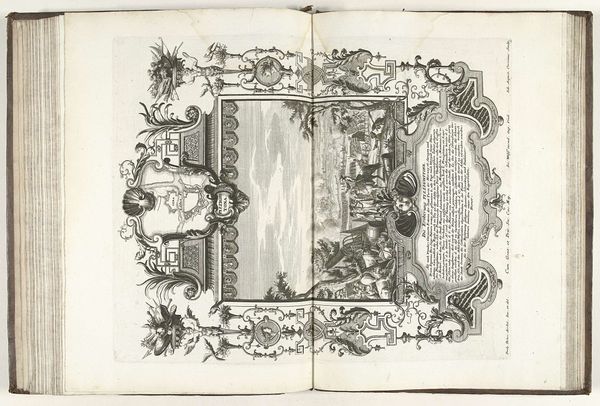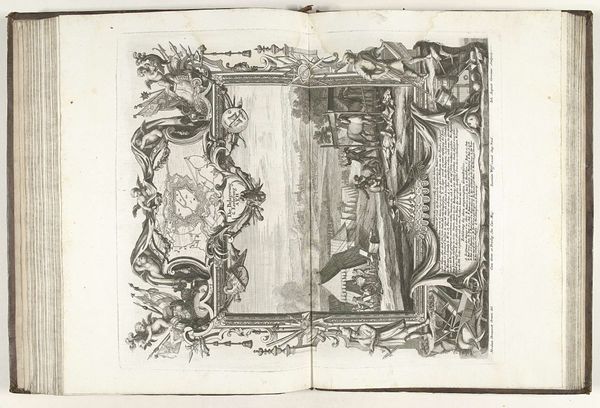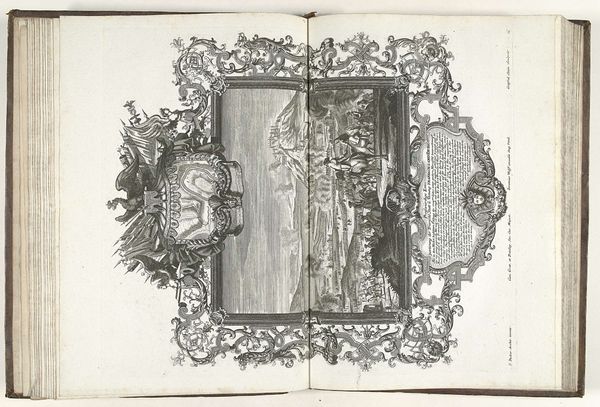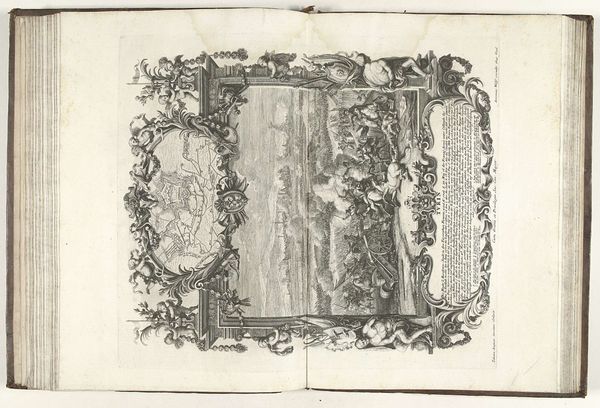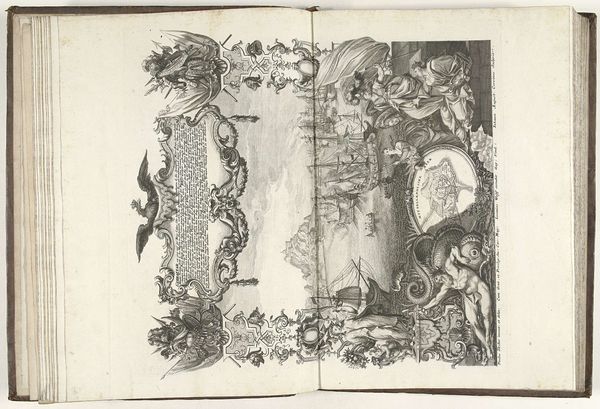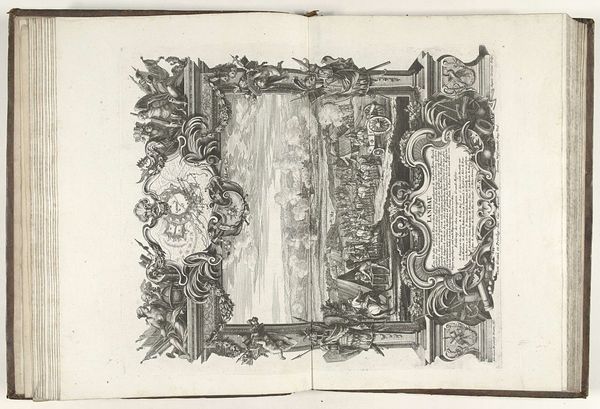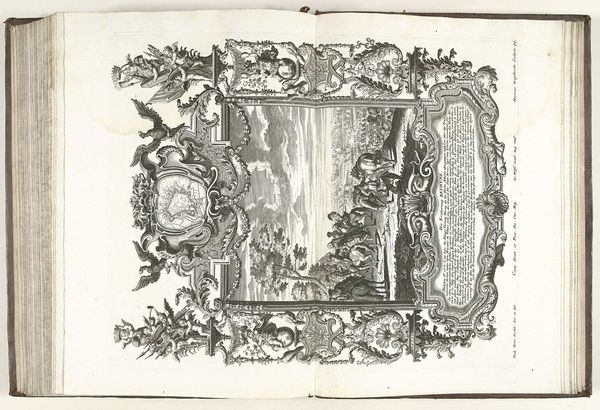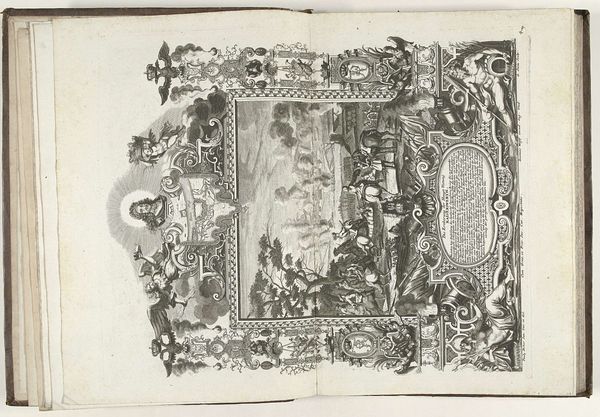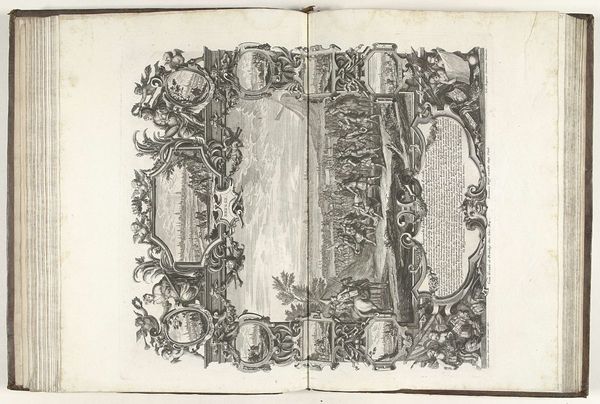
Aankomst van koning Karel III in Catalonië en zijn intocht in Barcelona, 1705 1712 - 1715
0:00
0:00
print, engraving
#
baroque
# print
#
old engraving style
#
perspective
#
personal sketchbook
#
cityscape
#
history-painting
#
engraving
Dimensions: height 482 mm, width 380 mm
Copyright: Rijks Museum: Open Domain
Editor: This engraving, "Arrival of King Charles III in Catalonia and His Entry into Barcelona, 1705," made between 1712 and 1715 by Johann August Corvinus, feels so ornate and detailed. It's clearly designed for a book. What do you see when you look at how it's made? Curator: I see the labor involved in producing not just the image itself, but the entire book. The paper-making, the meticulous engraving process—it all points to a significant investment of time and skill. Consider the socioeconomic context: Who could afford such a book, and what message did its material luxury convey? Editor: So, it’s not just about the image of King Charles but about what the image *as an engraving* represented? Curator: Precisely. The act of depicting this event through print – a reproducible medium – suggests an intent to disseminate a certain political message. The choice of engraving itself, rather than, say, painting, hints at a desire to reach a broader audience, albeit still a privileged one. Who controlled the means of production here, and whose interests were being served? Editor: It's interesting to consider how the physical object connects to social power. Did the intended audience even consider that, or did they just see an image of their King? Curator: Good question. That tension, between the immediate image and its material reality, is at the heart of the piece. The labor and cost were very real, impacting who had access to this version of events. Do you think mass production changes that? Editor: Definitely gives me a lot to think about regarding the relationship between art, materials, and power. Thanks! Curator: And for me, it highlights the fascinating, continuous thread that links historical artisanal labor to contemporary discussions about digital labor and image production.
Comments
No comments
Be the first to comment and join the conversation on the ultimate creative platform.
